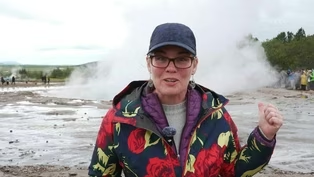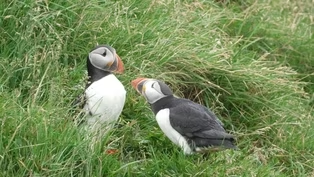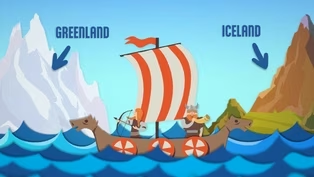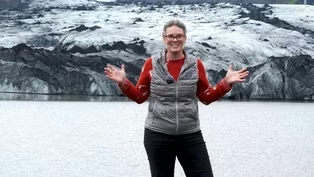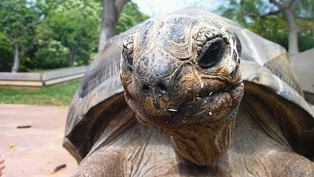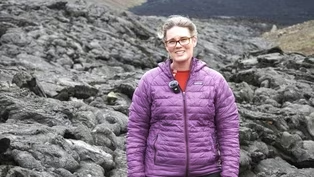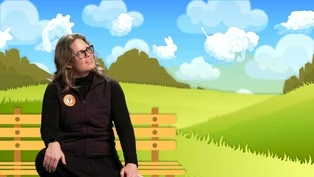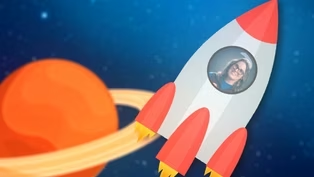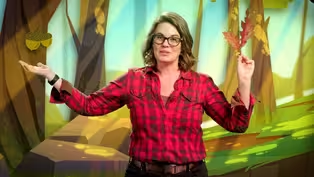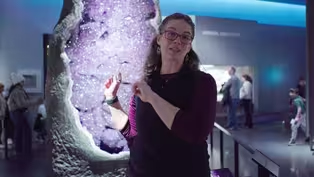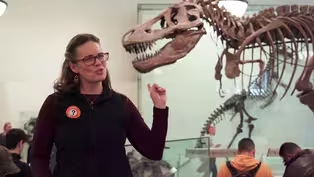But Why – A show for curious kids
Why are continents so big?
5/23/2025 | 2m 16sVideo has Closed Captions
Why are continents so big? Asks Oscar from New Zealand.
Continents are huge and home to lots of different people, cultures, countries, sceneries, animals, and more! But, what would the Earth look like if all those landmasses were smushed together like some super duper mega huge continent?
Problems playing video? | Closed Captioning Feedback
Problems playing video? | Closed Captioning Feedback
But Why – A show for curious kids is a local public television program presented by Vermont Public
But Why – A show for curious kids
Why are continents so big?
5/23/2025 | 2m 16sVideo has Closed Captions
Continents are huge and home to lots of different people, cultures, countries, sceneries, animals, and more! But, what would the Earth look like if all those landmasses were smushed together like some super duper mega huge continent?
Problems playing video? | Closed Captioning Feedback
How to Watch But Why – A show for curious kids
But Why – A show for curious kids is available to stream on pbs.org and the free PBS App, available on iPhone, Apple TV, Android TV, Android smartphones, Amazon Fire TV, Amazon Fire Tablet, Roku, Samsung Smart TV, and Vizio.
Providing Support for PBS.org
Learn Moreabout PBS online sponsorshipMore from This Collection
Fun facts about the Earth and beyond!
Why is Iceland green and Greenland icy?
Video has Closed Captions
Why is Iceland green and Greenland icy? Asks a number of viewers. (2m 39s)
Video has Closed Captions
How are glaciers formed? Asks Eena from British Columbia. (2m 29s)
Are there animals or plants that can live forever?
Video has Closed Captions
Are there animals or plants that can live forever? Asks Eleanor from New York. (2m 25s)
Why does Iceland have so many volcanoes?
Video has Closed Captions
Why does Iceland have so many volcanoes? (1m 46s)
Can I run on the rings of planets?
Video has Closed Captions
Can I run on the rings of planets? Asks Iola from New York. (2m 13s)
Video has Closed Captions
How do seeds grow into trees? Asks Job from Conecticut (2m 13s)
Video has Closed Captions
How are geodes made? Asks Esther from Massachusetts. (1m 53s)
Video has Closed Captions
What is a Solar Eclipse? Asks Camila from Dobbs Ferry ,NY (1m 53s)
Why do T-Rexes have small arms?
Video has Closed Captions
Why do T-Rexes have small arms? Asks Grigor from Switzerland. (2m 1s)
Providing Support for PBS.org
Learn Moreabout PBS online sponsorshipYou've seen a map of the world: seven continents and one global ocean, divided into five regional segments.
But the Earth didn't always look like this.
Why are continents so big?
Scientists think that around 200 million years ago, there actually used to be an even bigger continent.
In fact, the whole Earth had just one supercontinent.
It was called Pangaea.
Well, back then, there were no humans around to call it anything.
But we call it Pangaea now.
Pangea means all the Earth.
If you look closely at that map, you can kind of see how these big continents might have fit together, like a puzzle, to form one gigantic landmass.
So how did they break apart?
Here's where we introduce the theory of plate tectonics, which goes like this: The Earth's crust is made up of about 20 massive slabs of rock.
We call those tectonic plates.
And because the Earth's core is unbelievably hot, it heats up the magma underneath those plates.
As the magma heats and cools, the plates slowly move around.
Which is how we ended up with a map of the world that looks like this.
But the thing is, tectonic plates are still moving.
Sometimes they move towards each other, which causes earthquakes.
Sometimes they move away from each other, which causes earthquakes.
And sometimes the plates slide past each other, which also causes earthquakes.
But the fact that the plates are still moving today also means that the map of the world is always changing, just too slowly for us to notice in real time.
Since our Earth is a sphere, continents can't drift apart forever without running back into each other.
But don't worry, they only move a few centimeters a year.
So you've got, oh, about 250 million years before that happens.
To make sure you never miss But Why, like this video and subscribe to our channel and find out more at butwhykids.org.

- Science and Nature

Explore scientific discoveries on television's most acclaimed science documentary series.

- Science and Nature

Capturing the splendor of the natural world, from the African plains to the Antarctic ice.












Support for PBS provided by:
But Why – A show for curious kids is a local public television program presented by Vermont Public
